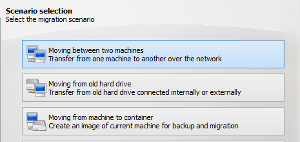
:no_upscale()/cdn.vox-cdn.com/uploads/chorus_asset/file/22899489/CnD4YoV.png)
Let Windows Setup erase the disk for you.This is only useful if you want to erase all traces of data on the disk completely and securely. Use a utility like DBAN to erase the disk before running Windows Setup.As a result, “reformatting” has come to mean exactly that: erasing the disk by setting up those initial data structures.įor the purposes of reinstalling Windows from scratch, all we really care about is that the disk be erased before we start. The term also referred to the next step: setting up the initial data that would organize the files and folders to be added later.Ĭoincidentally, just that last step - setting up the initial data on the disk - has the side effect of making anything that might have been on the disk inaccessible. Formatting set up the underlying magnetic information so the disk could be used. The term “formatting” goes back to days when hard disks had to be physically prepared before data could be written on them.

Unless you know for certain there’s nothing there you need, an image backup is the right way to be prepared when you remember some weeks from now that you forgot to save a specific file. We’re about to erase everything on your hard disk.

I can’t stress the importance of Step 1: backing up enough. You can do this either from the backup image we started with in Step 1, or from other sources, depending on how you organize your data. Windows on its own isn’t enough you’ll want to reinstall additional software. We won’t cover that step here, since it varies dramatically depending on what applications you use. This typically means booting from a Windows setup disk and letting the setup program do its thing. While “reformatting” refers to a specific operation, in this situation, it refers to any technique used to erase or overwrite everything on the hard disk. This saves all current content in case you want it later.
:max_bytes(150000):strip_icc()/002-how-to-stop-windows-10-updates-in-progress-4584382-2ace590849514d038beabfe9a54a0575.jpg)
Take an image of the existing machine, if possible. Reformatting a machine and reinstalling everything to start over is typically a five-step process.


 0 kommentar(er)
0 kommentar(er)
